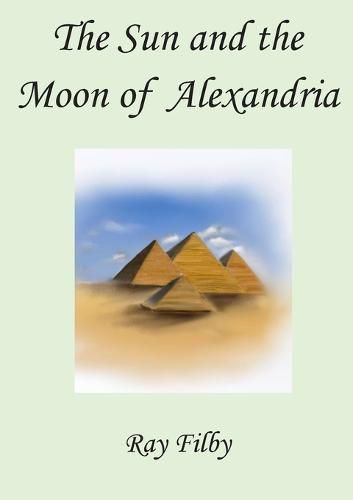Readings Newsletter
Become a Readings Member to make your shopping experience even easier.
Sign in or sign up for free!
You’re not far away from qualifying for FREE standard shipping within Australia
You’ve qualified for FREE standard shipping within Australia
The cart is loading…






This title is printed to order. This book may have been self-published. If so, we cannot guarantee the quality of the content. In the main most books will have gone through the editing process however some may not. We therefore suggest that you be aware of this before ordering this book. If in doubt check either the author or publisher’s details as we are unable to accept any returns unless they are faulty. Please contact us if you have any questions.
Apollos, the main character of this story, is mentioned many times in the New Testament as an associate of St. Paul and a great teacher of the Christian faith. However, apart from indicating that he hailed from Alexandria, scarcely any information exists about the biography and background of this remarkable man. Some scholars even attribute to him the authorship of the anonymous Epistle to the Hebrews. Carte blanche is therefore provided for writing a fictional biography of Apollos. The author has been careful to provide Biblical references among the appendices at the end of the book to ensure that anything written about Apollos is at least consistent with the Biblical narrative.
Although handsome, articulate and clever, Apollos finds that his life lacks meaning. The gods that his parents worship seem silly to him. Under the influence of his tutor, Jerahmeel, he becomes a Jew. Later, after travels to his Greek homeland, to Jerusalem, Antioch and Corinth, Apollos converts to Christianity. In Alexandria, he has been friendly with two sisters, Demeter and Diana. Demeter, whom he loves, marries a Roman official and leaves for the Imperial capital and social success. Riots in Alexandria and the murder of her parents cause the thoughtful Diana, already a Christian, to move to Ephesus. The trio lose touch but eventually, Diana meets and marries Apollos and helps him with his work in the new church at Corinth. The two sisters are reunited many years later to finally part in the blood stained sand of the amphitheatre at Nimes. The story which reflects the exhilaration and persecution that were part of the early church is interwoven with expositions of Christian belief. The real life Apollos, as in this story, had to be instructed by Priscilla and Aquila about the Holy Spirit. Readers can match Apollos’ growth in understanding with their own.
Included in the appendices are maps of places Apollos visited in his travels. These are based on the maps in Ronald Brownrigg’s book, ‘Pauline Places’. The additional details shown on these maps, related to Apollos’ visits, are of course fictitious.
$9.00 standard shipping within Australia
FREE standard shipping within Australia for orders over $100.00
Express & International shipping calculated at checkout
This title is printed to order. This book may have been self-published. If so, we cannot guarantee the quality of the content. In the main most books will have gone through the editing process however some may not. We therefore suggest that you be aware of this before ordering this book. If in doubt check either the author or publisher’s details as we are unable to accept any returns unless they are faulty. Please contact us if you have any questions.
Apollos, the main character of this story, is mentioned many times in the New Testament as an associate of St. Paul and a great teacher of the Christian faith. However, apart from indicating that he hailed from Alexandria, scarcely any information exists about the biography and background of this remarkable man. Some scholars even attribute to him the authorship of the anonymous Epistle to the Hebrews. Carte blanche is therefore provided for writing a fictional biography of Apollos. The author has been careful to provide Biblical references among the appendices at the end of the book to ensure that anything written about Apollos is at least consistent with the Biblical narrative.
Although handsome, articulate and clever, Apollos finds that his life lacks meaning. The gods that his parents worship seem silly to him. Under the influence of his tutor, Jerahmeel, he becomes a Jew. Later, after travels to his Greek homeland, to Jerusalem, Antioch and Corinth, Apollos converts to Christianity. In Alexandria, he has been friendly with two sisters, Demeter and Diana. Demeter, whom he loves, marries a Roman official and leaves for the Imperial capital and social success. Riots in Alexandria and the murder of her parents cause the thoughtful Diana, already a Christian, to move to Ephesus. The trio lose touch but eventually, Diana meets and marries Apollos and helps him with his work in the new church at Corinth. The two sisters are reunited many years later to finally part in the blood stained sand of the amphitheatre at Nimes. The story which reflects the exhilaration and persecution that were part of the early church is interwoven with expositions of Christian belief. The real life Apollos, as in this story, had to be instructed by Priscilla and Aquila about the Holy Spirit. Readers can match Apollos’ growth in understanding with their own.
Included in the appendices are maps of places Apollos visited in his travels. These are based on the maps in Ronald Brownrigg’s book, ‘Pauline Places’. The additional details shown on these maps, related to Apollos’ visits, are of course fictitious.